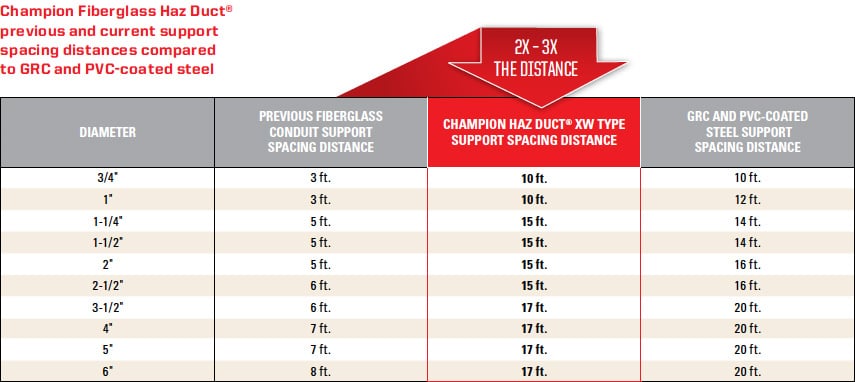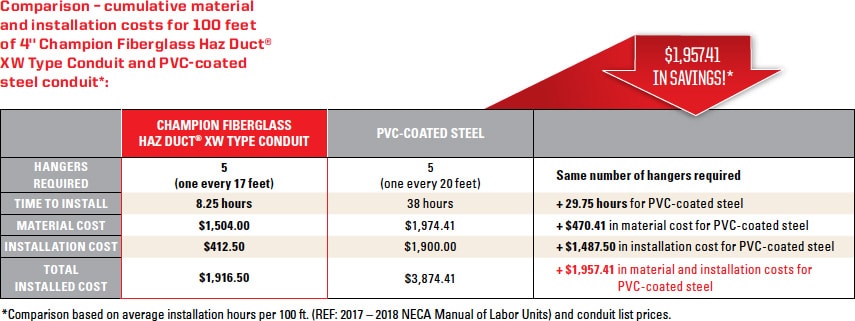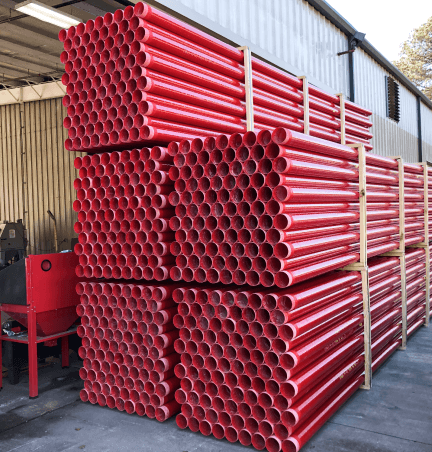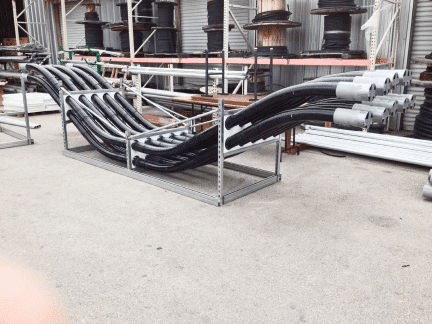Because of the effect on overall costs, comparative conduit system support spacing distances (and the number of supports required) has often been a deciding factor when choosing between UL listed products like fiberglass conduit and other materials. In 2016, Champion Fiberglass worked closely with Underwriters Laboratories (UL) in order to clarify requirements and update the code around longer support spacing distances for Champion Fiberglass conduit. The result was longer support spacing distances for Champion Haz Duct® conduit in 2016; Champion Duct® Standard Wall (SW), Medium Wall (UL designates Champion Fiberglass MW for 5″ and 6″ as SW) and Heavy Wall (HW) conduit followed suit in 2017.
Competitive support spacing distances are building results.
Support spacing distances—comparison
Champion Fiberglass conduit’s UL Listed support spacing distances have doubled (and in some cases, tripled) for many conduit diameters. They are now comparable to those offered by GRC and PVC-coated steel, in addition to several material and installation benefits these materials do not offer. These charts offer an at-a-glance overview of Champion Fiberglass conduit’s previous and updated support spacing distances (by diameter and product), allowing you to easily compare to those of GRC and PVC-coated steel.


EXTENDED SUPPORT SPACING DISTANCES, LOWER INSTALLATION RATES, AND LIGHTER WEIGHT CONTRIBUTE TO SAVINGS.
In comparing nationally recognized Champion Fiberglass conduit to other materials, it’s easy to see how expanded pipe support spacing distances (in addition to RTRC’s light weight and ease of installation) allow maximum space and contribute to greater overall savings.

Make Your Own Comparison.
The new Champion Fiberglass Conduit Calculator gives you an accurate way to compare costs between materials. Simply input hourly rate, conduit diameter and type, and length to be installed, then choose from four conduit materials (PVC-coated steel, GRC, aluminum, and stainless steel) to compare with fiberglass conduit. The result — and savings — could be a reality for your next project












